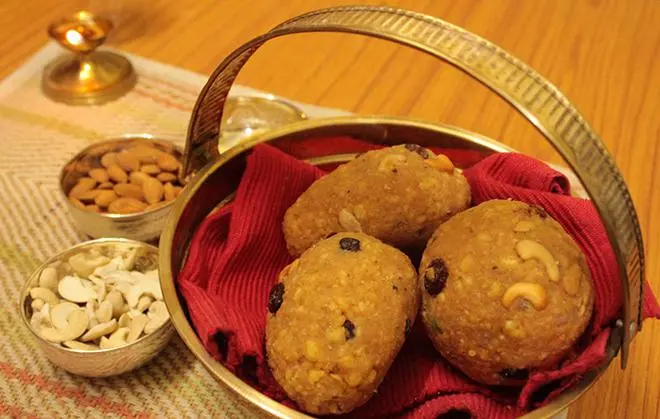Ever since childhood, I have seen camphor in the prayer room of my house. Small, translucent white tablets tucked away in a small tin box. These tablets are taken out and used on special puja days, to light up the lamp for the ritual aarti, the flame that we rotate in homage to the Deity. Except for this occasional use, I have never given camphor a second thought.
This was until I met a young camphor enthusiast named Akshay Dujodwala earlier this year. First, he educated me on why camphor is used during religious pujas. Since camphor burns away completely leaving no trace behind, it symbolises complete union with God.
Camphor cones

Mangalam Organics’ CamPure camphor works wonders as room freshners
Then, he narrated an interesting story. His family manages a firm called Mangalam Organics that has long been in the business of manufacturing camphor. A few years ago, his mother took camphor and packed it into small woven cloth bags, shaped into cones and fastened with pieces of string. These bags worked wonderfully well as cupboard and bathroom fresheners. Some of these cones were gifted to friends, and people liked them so much that they began enquiring where they could be purchased.
This led to the birth of an innovative new product named CamPure camphor cones. It can be used as air fresheners and even as mosquito repellents. Since camphor is an organic product (it is made from a pine tree extract), the cones are totally safe, even around children and pets. CamPure cones have now become hot sellers in many markets. They are an excellent healthy alternative to other air fresheners which often contain chemicals. I have now used these camphor cones in my cupboards at home, and find their scent delightfully fresh.
This story stoked my curiosity and led me on a voyage of discovery into the world of camphor. I discovered that this simple product serves many consumer needs which marketers are actively leveraging by creating many new offerings. However, this is still a nascent space, with lots of future opportunity.
Aromatherapy and skin care
While the use of camphor for lighting of lamps in pujas is well known, an interesting emerging use is aromatherapy. Here, the camphor is gently heated, rather than burnt. This creates a most refreshing and calming aroma. For best results, the purest form of the product, called Bhimseni camphor, is heated on an aroma diffuser or a kapur dani. The unique fragrance creates positive vibes in our minds, perhaps because we associate this scent with auspicious and divine occasions.
Camphor is also used for skin and hair care. It prevents skin irritations and infections, and stimulates blood flow to the scalp. It can be added to coconut oil, or blended with castor oil and almond oil. Combined with olive oil and egg whites, it makes for a wonderful hair mask. I was pleasantly surprised to see camphor soaps, which have anti-bacterial and deep cleansing properties. Yet, at the same time, they have the distinctive sweet fragrance of camphor. This combination of being an organic product, with a naturally appealing scent, and medicinal properties, can potentially make camphor-themed skin care products a big draw in the future.
Laddoos, pickles and balm

One of my most interesting discoveries has been around the use of camphor in food products. Did you know that the famous sweet laddoos that are given out as prasadam to devotees at the temple in Tirupathi contain edible camphor as one of their essential ingredients? Camphor has a historical link to this temple – there is an interesting story about why green camphor is applied to Lord Venkateswara’s chin in the Tirumala Temple every day. If you are curious to know more, you will find this story online.
In fact, edible camphor has long been part of India’s culinary heritage, since it is known to aid digestion and prevent obesity. There are even reports that it is an aphrodisiac. For instance, camphor has been used to flavour Pongal in Tamil Nadu, to provide a unique taste to pickles in Karnataka and for a specific curd rice dish in western India. This is yet another space that brands can leverage powerfully because I cannot think of any food or ingredient brand that “owns” camphor in consumers’ minds today.
In a very different space, camphor has been used in many traditional medical formulations. For example, Tiger Balm lists camphor as one of its active ingredients which helps reduce pain and swelling. During the pandemic, camphor-based hand sanitisers and hand washes have entered the market, though awareness about these products and their specific benefits is quite low.
This brief exploration highlights the potential headroom for growth of camphor themed products, if only marketers can strike the right camphor-chord with consumers at large. On that note, I will now sit back and indulge in some nice, relaxing camphor aromatherapy.
(Harish Bhat is Brand Custodian, Tata Sons. These are his personal views.)







Comments
Comments have to be in English, and in full sentences. They cannot be abusive or personal. Please abide by our community guidelines for posting your comments.
We have migrated to a new commenting platform. If you are already a registered user of TheHindu Businessline and logged in, you may continue to engage with our articles. If you do not have an account please register and login to post comments. Users can access their older comments by logging into their accounts on Vuukle.